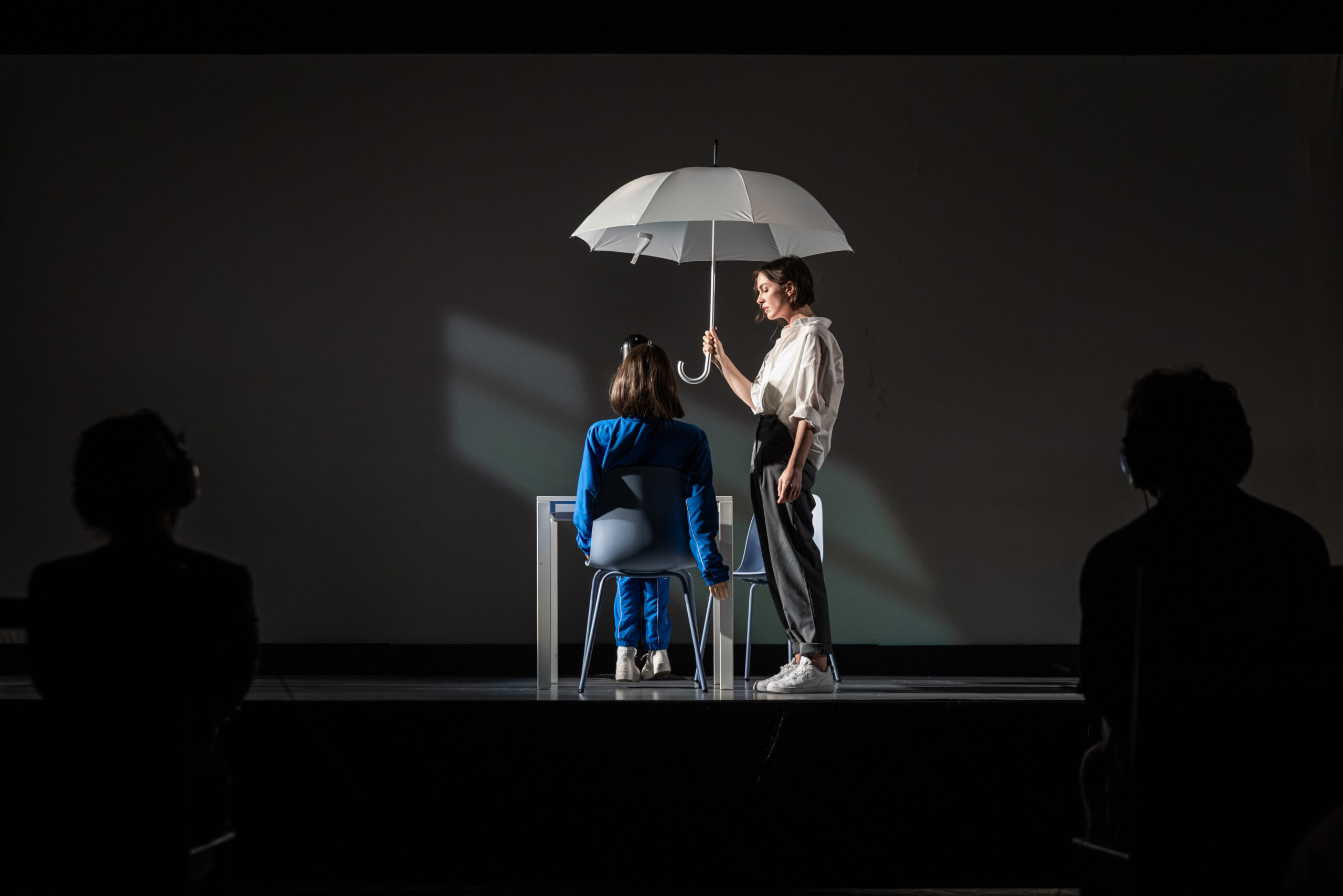
As part of the Dublin Fringe Festival, Rescue Annie delved into ideas of intimacy and proximity during a time when people are anxious about being close to one another. The show ran from the 11- 18th September 2021 at the Abbey Theatre and was co-created by Lauren-Shannon Jones and Eoghan Carrick; both graduates from the Lir Academy.
On arrival at the theatre, the audience was introduced to the following set design: a stage, almost unfurnished apart from a table and two chairs in the middle, one of which was occupied by a mannequin with its back to the viewers. Rather than being a prop however, the mannequin became a realistic actor, performing alongside Lauren Shannon Jones.
The dummy was that of the L’Inconnue de la Seine (Unknown Woman of the Seine), an unidentified woman who drowned in the 1880s. So beautiful she was in her death, that her face was used to create a deep fake, and later a CPR model now known as Resusci Annie, making her the most kissed woman in the world. She inspired Nabokov to write poetry, Michael Jackson to compose music, and now Carrick and Jones to develop a show.
Rescue Annie began as an intimacy workshop. Each member of the audience was provided with a pair of headphones, while the mannequin was equipped with binaural microphones, allowing the viewers to hear everything from Annie’s perspective. Together with Jones’s persuasive voice directing the intimacy workshop, this created a sense of being physically inside the dummy. This notion was enhanced when at one moment during the performance the camera turned to the audience, putting Annie’s mask on each of the faces.
Jones’s introductory monologue drew inspiration from the Hamlet-Ophelia scenes, drawing a line between the two drowned women. It was also lightly filled with our everyday, relatable allusions. While this added an amusing element to the performance, it also made one feel a sense of intimacy with the script. The Hamlet theme permeated the whole performance and was circled at the concluding moments of the show.
What is remarkable about Jones and Carrick’s production, is how they managed to portray so much using so little. There were two scenes depicting common modern-life situations, where Jones interacted with the dummy, and (believe it or not), the dummy interacted with Jones. Firstly, the mannequin encountered her mother, who was portrayed as being disappointed in life and therefore expelled her bitterness onto her daughter. Then, the dummy was having tea with a friend, allegedly worried about Annie, who was herself engaged and hopeful that marriage will make things different for her. Due to Jones’s masterful acting, and the professionally executed sound design, the dummy appeared to be fully engaged in the scene. The viewer, being inside Rescue Annie, could not help but be engaged too.
However, a dancing scene, following a drowning moment off the stage broke the spell of the performance for a moment. A tad absurd, it caused the audience to become confused. Whilst it did seem to not fit the tone, it also allowed some time to digest what had just happened on stage for a moment.
“I’m interested in the point where things get really hard to use words for”, says Carrick when speaking about Rescue Annie. Indeed, theatre is a perfect place for such a purpose. Through images and sounds, through the audience being together in the room, being on the same page, theatre allows one to articulate the inexpressible and explore what cannot be said, and Rescue Annie is a powerful example of that.






